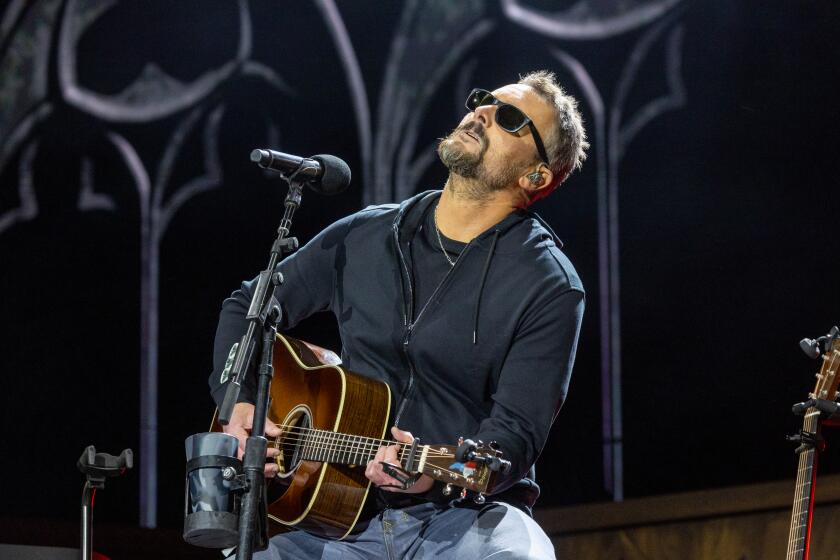Capturing the Power of Laura Nyro
***1/2 LAURA NYRO
“Stoned Soul Picnic: The Best of Laura Nyro”
Columbia/Legacy
“I’m interested in art, poetry and music,” Laura Nyro, who died Tuesday of ovarian cancer at the age of 49, is quoted as saying in the booklet that accompanies this new, two-CD anthology. “As that kind of artist, I can do anything, I can say anything. It’s about self-expression. It knows no package.”
Today that kind of ambitious attitude is a cliche, but when Nyro made her recording debut in 1966--an 18-year-old prodigy with a bursting exuberance befitting her age and a sophistication well beyond her years--it was still rare in the world of pop music. And it was virtually unheard of among women.
Her songs, as recorded by others--”Wedding Bell Blues” by the 5th Dimension, “And When I Die” by Blood, Sweat & Tears, “Eli’s Comin’ ” by Three Dog Night and “Stoney End” by Barbra Streisand--are much more famous than Nyro herself. She toured only sporadically and never really played the pop star game.
But her own recordings, showcasing the vivid fluidity of both her voice and lyrics, laid the groundwork for an explosion of female artists who would not be limited by the traditional roles ascribed to female pop figures. Even as she crafted pop hits with Brill Building-worthy hooks, she was using music as a vehicle for highly personal expression.
Listening to the earliest work on this thorough collection--her 1966 recording of “Wedding Bell Blues,” which opens the set, still sounds fresh--it’s hard to imagine Carole King’s “Tapestry” or Joni Mitchell’s early albums coming to be without Nyro’s signposts to guide the way.
As others came to take up the torch, Nyro pushed beyond her early work, sacrificing some of the immediate melodic pleasures for more richly detailed writing on the 1969 album “New York Tenda-berry,” a cycle of literate, affecting street scenes and character studies represented here by “Capt. St. Lucifer,” “Gibson Street” and the title song.
These were not songs that others would turn into hits--her writing had grown too personal, both in style and content, for interpretation by others.
Unfortunately, Nyro seemed to lose her own signposts shortly after that. Apparently sensing that situation, she smartly reconnected with her inspirations on 1971’s “Gonna Take a Miracle,” a set of Brill Building and Motown songs with spirited vocal support from the trio LaBelle. It worked, for a time--”I Met Him on a Sunday” and “The Bells” carry just as much joy as anything on Disc One of this set.
After that, however, recordings (and apparently inspiration) became rarer. She released only two more studio albums in the ‘70s, and one each in the ‘80s and ‘90s. The songs here from those works bespeak an isolated and insulated life. It’s no coincidence that other than the “Miracle” tracks, the best moments on the second disc are live reworkings of early songs, closing with two 1994 recordings that seem particularly poignant this week: “And When I Die” and “Save the Country.”
The former’s message of acceptance and contentment sounded brash and innocent when she wrote it at 18; this matured version sounds all-too-knowing--though still vibrant and optimistic. And “Save the Country,” in 1968 an anthem of impatient, utopian naivete, is now infused with a sense of calm certainty that life goes on.
Albums are rated on a scale of one star (poor), two stars (fair), three stars (good) and four stars (excellent).
More to Read
The biggest entertainment stories
Get our big stories about Hollywood, film, television, music, arts, culture and more right in your inbox as soon as they publish.
You may occasionally receive promotional content from the Los Angeles Times.






